Hello, I’m Dr. Candy Akers. As a dedicated veterinarian and passionate advocate for pet safety, I’ve spent years researching the potential hazards that lurk in our homes and gardens. One of the most common questions I encounter from concerned pet owners is about the safety of various household products, especially when it comes to our furry friends. RoundUp, a popular weed killer, is one such product that has garnered significant attention. With its widespread use in gardens and lawns across the country, it’s crucial for us to understand its impact on our beloved pets. You may find yourself asking “Is RoundUp safe for dogs?” The short answer is no.
In this blog, I aim to shed light on the facts surrounding RoundUp, its active ingredient Glyphosate, and its safety implications for dogs. My goal is to provide you with evidence-based insights, so you can make informed decisions that prioritize the well-being of your canine companions. Let’s dive in.
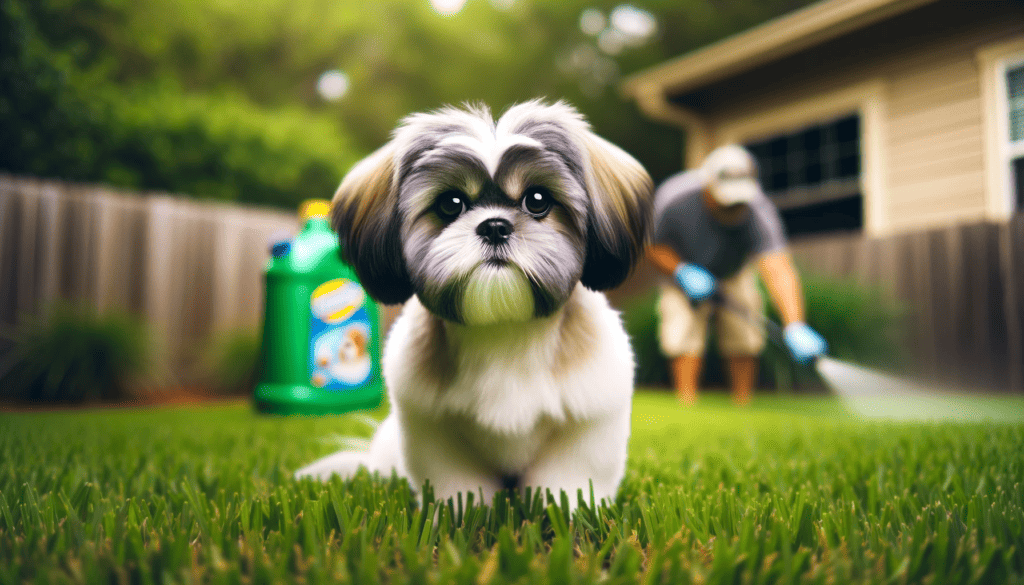
What is RoundUp? Understanding Glyphosate Weed Killer
RoundUp is one of the most widely recognized and used herbicides globally. Its primary purpose is to control and eliminate unwanted weeds and grasses in gardens, lawns, and agricultural lands. But what exactly is RoundUp, and why has it become such a staple in both residential and commercial landscaping?
Composition and Main Ingredient
At the heart of RoundUp is its active ingredient: Glyphosate. Glyphosate is a systemic herbicide, which means it is absorbed by plants and then transported throughout their systems, effectively killing them from the inside out. It works by inhibiting a specific enzyme pathway essential for plant growth, causing the plant to wither and die.
How RoundUp Works
When applied, RoundUp is absorbed primarily through the foliage of plants, rather than their roots. Once inside the plant, Glyphosate disrupts the shikimic acid pathway – a vital process that plants use to produce certain amino acids. Without these amino acids, the plant cannot produce proteins essential for growth, leading to its eventual death.
The Rise of RoundUp
Introduced in the 1970s by the Monsanto Company, RoundUp quickly gained popularity due to its effectiveness and broad-spectrum weed control capabilities. Over the years, its use has expanded from agricultural fields to home gardens, making it a go-to solution for many seeking a weed-free environment.
Safety and Environmental Concerns
While RoundUp has proven to be a powerful tool against unwanted vegetation, its widespread use has raised concerns about its environmental impact and potential health risks to humans and animals. Glyphosate’s role in the ecosystem, its persistence in the soil, and its potential runoff into water systems have been topics of extensive research and debate.
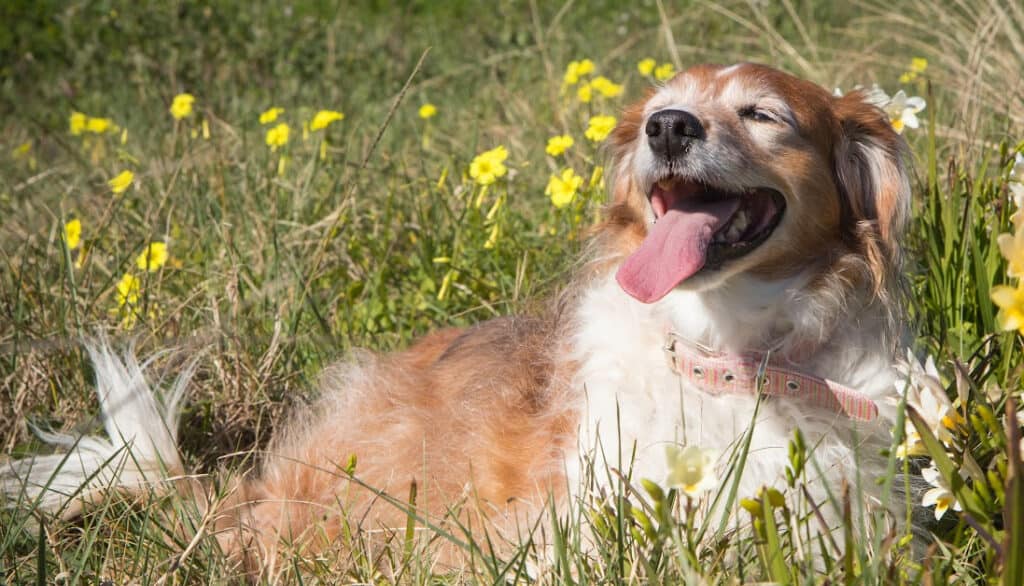
Is RoundUp Weed Killer Safe for Dogs? Unveiling the Truth
As a veterinarian, one of the most pressing concerns I often hear from pet owners revolves around the safety of various products they use in their homes and gardens. RoundUp, given its ubiquity, naturally becomes a focal point of such inquiries. So, is RoundUp safe for our four-legged friends? Let’s delve into the evidence and separate fact from fiction.
Glyphosate Toxicity in Animals
Glyphosate, the primary ingredient in RoundUp, has been the subject of numerous studies to determine its safety profile in animals, including dogs. While it’s classified as having low toxicity to dogs when ingested in small amounts, there are still potential risks. Large doses or prolonged exposure can lead to digestive issues, lethargy, and in severe cases, more significant health complications.
Reported Cases and Symptoms
Over the years, there have been isolated reports of dogs experiencing adverse reactions after coming into contact with freshly sprayed areas treated with RoundUp. Symptoms can range from mild, such as drooling and skin irritations, to more severe manifestations like vomiting, diarrhea, and respiratory distress.
It’s essential to note that while these cases exist, they are relatively rare when compared to the vast number of households that use RoundUp without any reported incidents. However, caution is always advised.
Factors Influencing Safety
Several factors can influence the safety of RoundUp concerning dogs:
- Concentration: Commercially available RoundUp products come in various concentrations. Those with higher glyphosate concentrations pose a greater risk.
- Exposure: Direct ingestion of the product or licking treated areas while still wet can increase the risk of adverse reactions.
- Dog’s Size and Health: Smaller dogs or those with pre-existing health conditions might be more susceptible to glyphosate’s effects.
While RoundUp, when used as directed and with precautions, poses a low risk to dogs, it’s always best to err on the side of caution. If you choose to use RoundUp or any herbicide, ensure that your pets are kept away from treated areas until the product has dried completely. And always monitor your dog for any unusual behavior or symptoms after potential exposure.

Immediate Steps: What To Do If You Suspect Your Dog Has Come Into Contact with RoundUp
Our pets are curious by nature, and despite our best efforts, they can sometimes find their way into areas we’d rather they didn’t. If you suspect your dog has come into contact with RoundUp or any herbicide, acting swiftly and calmly can make all the difference. Here’s a step-by-step guide on what to do.
1. Assess the Situation: First and foremost, determine the extent of the exposure. Did your dog merely walk over a treated area, or did they ingest some of the product? The type and amount of exposure can dictate the necessary response.
2. Remove Your Dog from the Area: Ensure your dog is no longer in the vicinity of the RoundUp or any treated areas. This will prevent further exposure and reduce the risk of complications.
3. Clean the Affected Area
- Skin/Fur Contact: If RoundUp has come into contact with your dog’s skin or fur, wash the area thoroughly with mild soap and water. Make sure to rinse well to remove all residues.
- Ingestion: If you believe your dog has ingested RoundUp, do not induce vomiting unless instructed by a veterinarian. Some chemicals can cause more harm if vomited, especially if inhaled.
4. Monitor for Symptoms: Keep a close eye on your dog for any signs of distress or unusual behavior. Symptoms to watch for include:
- Excessive drooling or salivation
- Vomiting or diarrhea
- Lethargy or weakness
- Difficulty breathing
- Skin irritation or redness
5. Contact Your Veterinarian: Even if your dog appears fine, it’s always a good idea to consult with your veterinarian after any potential exposure to herbicides. They can provide guidance tailored to your dog’s specific situation and may recommend further monitoring or treatment.
6. Prevent Future Incidents: Once the immediate situation is under control, consider ways to prevent future exposures. This might include:
- Storing herbicides out of reach
- Using barriers to keep pets away from treated areas
- Considering alternative, pet-safe weed control methods
While RoundUp poses a low risk to dogs when used as directed, accidents can happen. Being prepared and knowing how to respond can ensure your dog’s safety and well-being. Always prioritize your pet’s health and consult with professionals when in doubt.
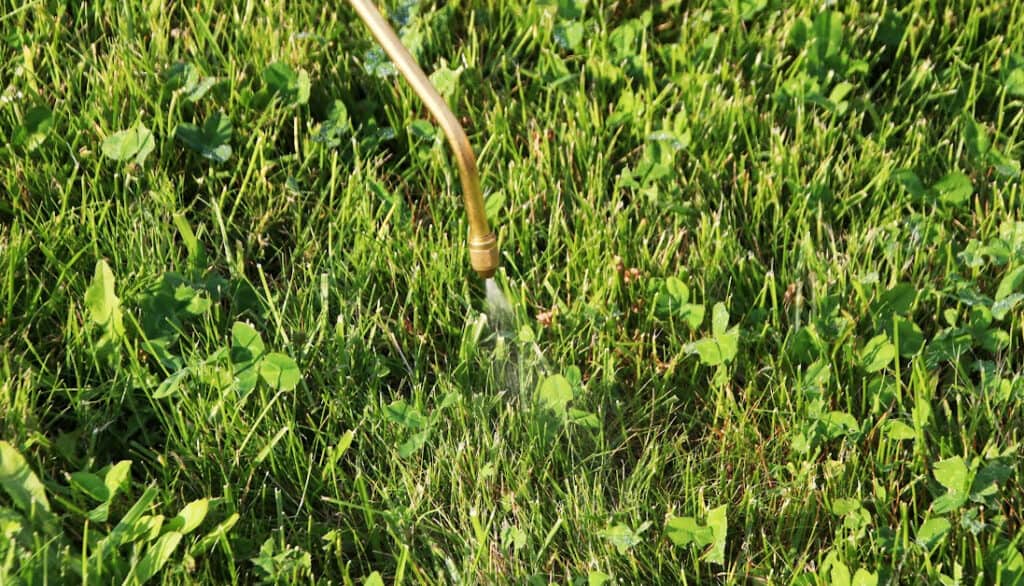
Ensuring Safety: How to Safely Use RoundUp Around Dogs
For many, RoundUp is an essential tool in the battle against unwanted weeds. However, when pets are part of the household, using such products requires an added layer of caution. Let’s discuss how to safely use RoundUp in a home shared with our canine companions.
1. Keeping Your Dog Away from Treated Areas:
- After applying RoundUp, ensure that your dog is kept away from the treated area for at least 24-48 hours or until the product has completely dried. This reduces the risk of direct contact or ingestion.
2. Using a Barrier:
- Physical barriers, such as fencing or temporary enclosures, can be effective in preventing dogs from accessing freshly treated areas. This is especially useful in larger gardens or yards.
3. Wearing Protective Clothing:
- When applying RoundUp, wear gloves and other protective clothing. After application, change and wash your clothes to prevent any transfer of residues that your dog might come into contact with.
4. Following the Label Instructions:
- Always read and adhere to the label instructions. This ensures you’re using the product correctly and in the right amounts, minimizing risks.
5. Considering Alternative Weed Control Methods:
- If you’re concerned about using chemical herbicides, consider natural or pet-safe alternatives. There are several eco-friendly and dog-friendly products available that can be effective in controlling weeds.
6. Store RoundUp Safely:
- Always store RoundUp and similar products in a secure location, out of reach of pets. This prevents any accidental ingestion or exposure.
7. Monitor After Application:
- Even with all precautions in place, always monitor your dog after you’ve used RoundUp in your garden. Look out for any signs of discomfort or unusual behavior, which could indicate exposure.
Using RoundUp in a household with dogs doesn’t have to be a daunting task. With the right precautions and a proactive approach, you can maintain a weed-free garden while ensuring the safety and well-being of your furry friend. Always prioritize your pet’s health and consult with experts when in doubt.

Post-Application Concerns: Is Roundup Safe for Dogs After It Dries?
One of the most frequently asked questions I encounter regarding herbicides, especially RoundUp, is about its safety after application. Many pet owners wonder: Once RoundUp dries, is it safe for their dogs to roam the treated areas? Let’s address this concern by examining the science and facts behind glyphosate’s behavior post-application.
How Glyphosate Reacts When Dried
Upon application, RoundUp’s active ingredient, glyphosate, begins its work on the plants. As it dries, the majority of the glyphosate is absorbed into the plants, targeting the enzymes responsible for their growth. The drying process significantly reduces the amount of glyphosate residues left on the surface.
Residual Risks and Considerations
While the risk of glyphosate exposure decreases as RoundUp dries, it doesn’t mean the risk is entirely eliminated. Here are some factors to consider:
- Weather Conditions: Humidity, temperature, and rainfall can influence how quickly RoundUp dries and how long any residues might remain. For instance, if it rains shortly after application, there’s a possibility of glyphosate runoff, which can pose a risk to pets.
- Type of Surface: RoundUp applied to hard surfaces like patios or driveways might not be absorbed as quickly as when applied to soil or plants. This can lead to longer drying times and potential residues.
- Product Formulation: Different RoundUp formulations have varying drying times and residual effects. Always refer to the product label for specific guidance.
Safe Practices for Pet Owners
To ensure your dog’s safety:
- Wait Before Allowing Access: It’s a good rule of thumb to wait at least 24 hours before allowing your dog to access areas treated with RoundUp. This gives the herbicide ample time to dry and minimizes any potential exposure.
- Monitor Your Dog: Even after waiting, keep an eye on your dog when they first access the treated area. Watch for any signs of discomfort or unusual behavior.
- Consider the Environment: If the weather has been particularly wet or humid, you might want to wait a bit longer before letting your dog roam the treated areas.
While the risks associated with dried RoundUp are considerably lower, it’s always best to exercise caution. By understanding the product’s behavior and taking preventive measures, you can ensure a safe environment for your furry friend.
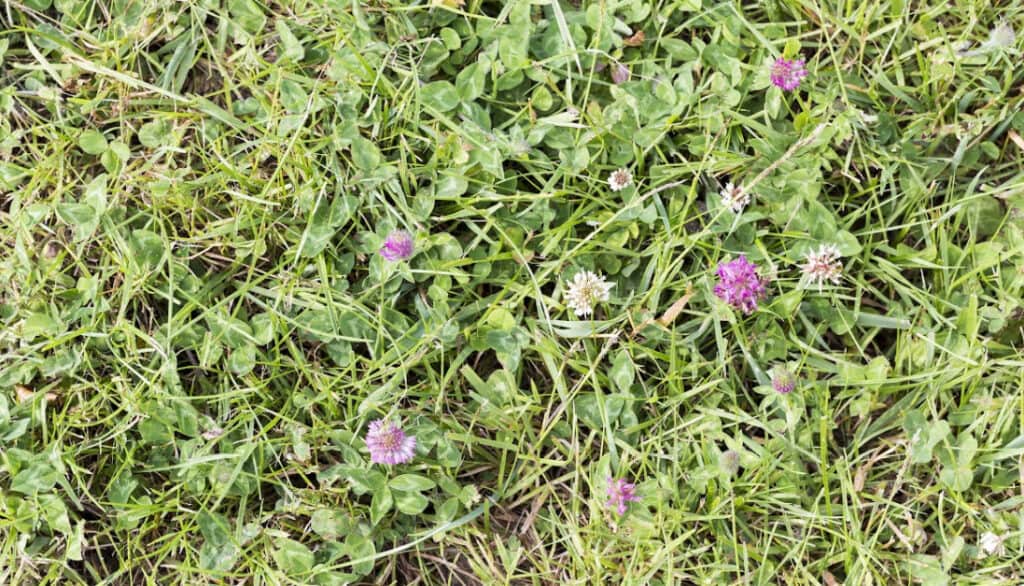
Timeframe Safety: How Long After Using Roundup Is It Safe for Pets?
When it comes to the safety of our beloved pets, every precaution matters. One of the primary concerns many pet owners have after using RoundUp or any herbicide is the safe timeframe for reintroducing their pets to the treated areas. Let’s delve into this topic to provide clarity and peace of mind.
Understanding the Degradation Process of Glyphosate
Glyphosate, the active ingredient in RoundUp, doesn’t remain active indefinitely. Once applied, it begins to break down and degrade in the environment. Several factors influence this degradation:
- Soil Composition: In most soils, glyphosate binds tightly to soil particles, which reduces its mobility and availability. Over time, soil microbes break down glyphosate into carbon dioxide and other natural compounds.
- Weather Conditions: Sunlight, temperature, and rainfall can all impact how quickly glyphosate degrades. Warm, moist conditions tend to accelerate the degradation process.
- Product Formulation: Different formulations of RoundUp may have varying persistence in the environment. Always refer to the product label for specific details.
General Recommendations
While it’s challenging to provide a one-size-fits-all answer due to the variables mentioned above, here are some general guidelines:
- 24 to 48 Hours: For most RoundUp products, waiting 24 to 48 hours after application before allowing pets to roam is a common recommendation. This timeframe ensures that the product has dried thoroughly and reduces the risk of direct contact.
- Check the Treated Area: Before reintroducing your pet, inspect the treated area. Ensure it’s dry and free from any puddles or noticeable residues.
- Consider the Weather: If it has rained shortly after application, it might be wise to wait an additional day or two. Rain can wash glyphosate residues into puddles or areas where pets might drink or play.
The safety of our pets is paramount. By understanding the behavior of products like RoundUp in the environment and following recommended guidelines, we can strike a balance between effective weed control and ensuring a safe space for our four-legged friends. Always prioritize your pet’s well-being and consult product labels or experts when in doubt.
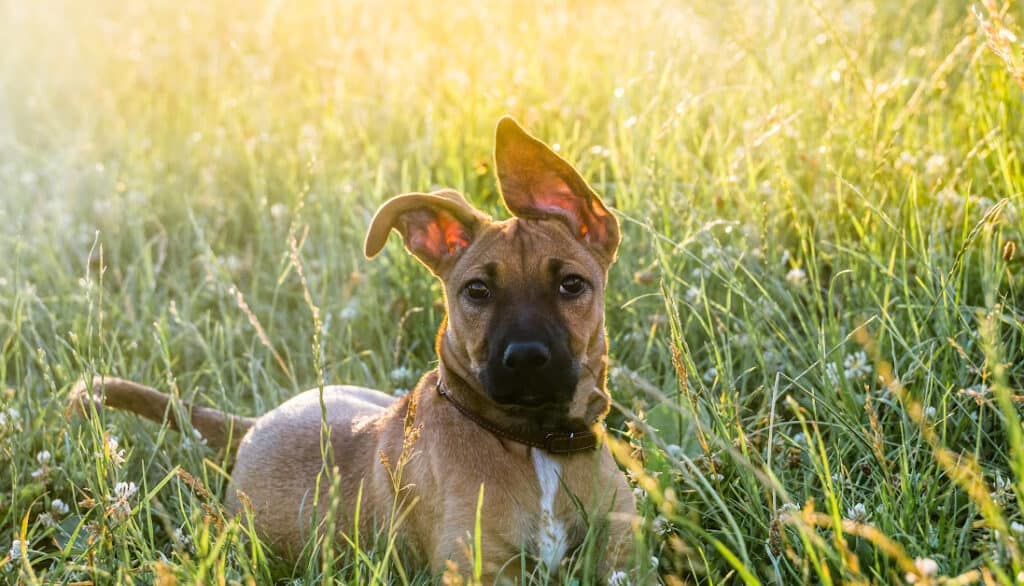
Pet Owners’ Dilemma: Can I Use Roundup If I Have a Dog?
For many pet owners, the garden is not just a personal sanctuary but also a playground for their furry companions. The desire for a weed-free garden often clashes with concerns about pet safety, especially when considering products like RoundUp. So, the pressing question arises: Can you use RoundUp and still ensure the safety of your dog? Let’s explore this dilemma.
Weighing the Pros and Cons
Pros:
- Effectiveness: RoundUp is a powerful herbicide that can effectively control and eliminate a wide range of weeds.
- Ease of Use: Ready-to-use formulations make it convenient for homeowners to tackle weed problems without professional help.
- Cost-Effective: For large areas, using RoundUp can be more economical than manual weeding or other methods.
Cons:
- Potential Risks: While glyphosate has low toxicity when used as directed, there’s always a risk of accidental ingestion or exposure for pets.
- Environmental Concerns: Overuse can lead to runoff, potentially affecting local water sources and ecosystems.
- Residual Presence: Even after drying, traces of glyphosate might remain, posing a risk if pets ingest or come into contact with treated plants.
Best Practices for Dog Owners
If you decide to use RoundUp, here are some guidelines to ensure your dog’s safety:
- Follow Label Instructions: Always use the product as directed. This includes using the recommended amounts and not over-applying.
- Keep Pets Away: After application, ensure your dog (and other pets) stay away from the treated area for at least 24-48 hours or until the product has dried completely.
- Store Safely: Keep RoundUp and other herbicides in a secure location where pets cannot access them.
- Consider Alternatives: If you’re still concerned, look into pet-safe weed control methods or natural alternatives to glyphosate-based products.
The decision to use RoundUp when you have a dog is a personal one. By being informed and taking necessary precautions, it’s possible to use the product without compromising your pet’s safety. However, always prioritize your dog’s well-being and consider all options before making a decision. Your garden’s beauty should never come at the expense of your pet’s health.
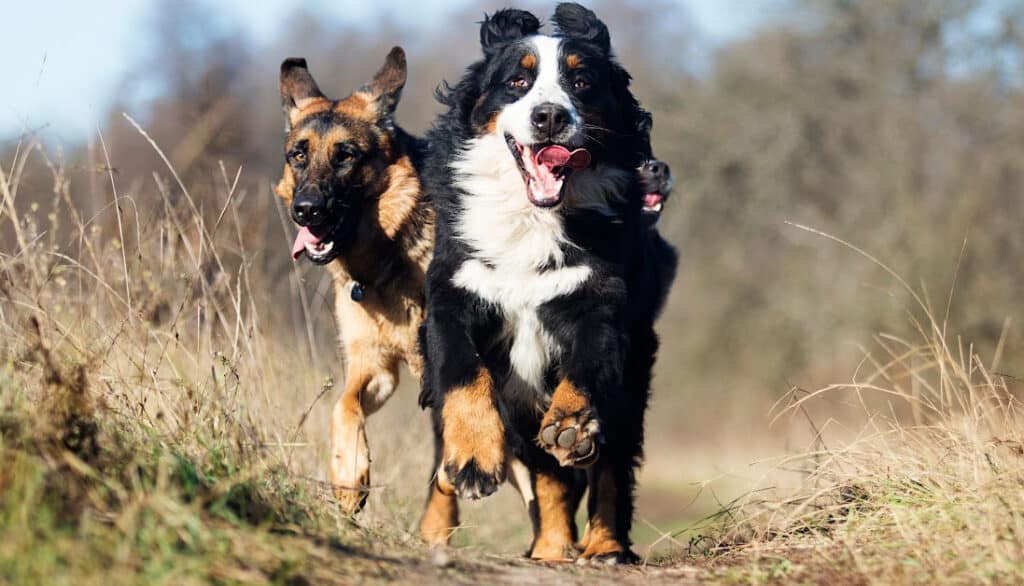
Conclusion
Navigating the world of gardening and landscaping while ensuring the safety of our beloved pets can often feel like a tightrope walk. With products like RoundUp being so prevalent, it’s essential for pet owners to arm themselves with knowledge and make informed decisions. As we’ve explored in this blog, while RoundUp offers undeniable benefits in weed control, it also comes with considerations and precautions, especially for households with pets.
The key takeaway is balance. With careful application, adherence to guidelines, and a vigilant eye on our pets, it’s possible to maintain a beautiful garden without compromising the safety of our four-legged companions. However, always remember that products and practices evolve, so staying updated on research and recommendations is crucial.
Thank you for joining me on this exploration of RoundUp and pet safety. I hope this information empowers you to make the best choices for both your garden and your furry family members. After all, a safe pet is a happy pet, and a well-informed owner is a confident one.
Frequently Asked Questions
Glyphosate is classified as having low toxicity to dogs when ingested in small amounts. However, large doses or prolonged exposure can lead to health complications. It’s always best to prevent any exposure and consult a veterinarian if you suspect your dog has come into contact with RoundUp.
As a general guideline, it’s recommended to wait at least 24 to 48 hours after application before allowing pets to roam the treated areas. This ensures the product has dried thoroughly and minimizes potential exposure.
If you believe your dog has ingested RoundUp, do not induce vomiting unless instructed by a veterinarian. Immediately remove your dog from the area, monitor for any signs of distress or unusual behavior, and consult with your veterinarian as soon as possible.
Yes, there are several natural and pet-safe alternatives to glyphosate-based products. Some options include vinegar-based solutions, corn gluten meal, and manual weeding. Always research and test any alternative method to ensure its effectiveness and safety for your specific garden and pet.
Rain shortly after RoundUp application can lead to runoff, potentially spreading the glyphosate to areas where pets might play or drink. If it rains soon after you’ve applied RoundUp, it’s wise to wait an additional day or two before allowing your dog to access the treated areas.
